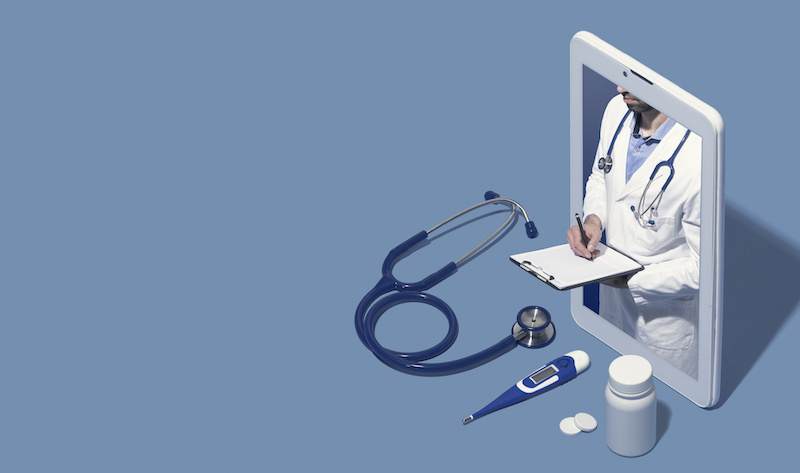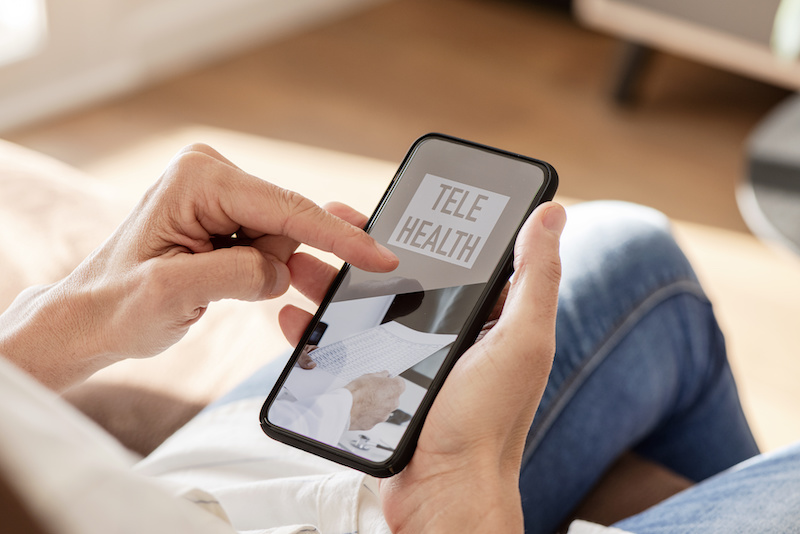9 Ways Automation Can Improve Patient Communication
The healthcare sector has been successful in adopting new medical technologies and managing a variety of illnesses.
Yet, there’s been a continuing struggle over the pace and efficiency of daily operations, especially patient communication.
What Is Patient Communication?
Patient communication is critical for healthcare professionals since it has been found to result in improved patient care and cost savings.
Ensuring a great quality of patient communication may help decrease readmissions and unnecessary testing, expedite patient payments, encourage greater compliance plans, and aid in early illness diagnosis, among other benefits.

Importance of Automation
Manual patient communication is inefficient and inconsistent in healthcare systems. It’s also contingent on the availability of healthcare service personnel. Additionally, keeping track of patient communication requires regular recordkeeping, which could be very easy with automation.
Fortunately, solution providers, like Relatient, offer services to improve healthcare communications using automation. This may help enhance the healthcare system’s operational efficiency, resulting in more accurate and effective services.
Automated healthcare solutions improve the productivity and cost-effectiveness of health facilities by automating key operations. With a growing number of individuals needing quality healthcare, professionals may be unable to keep up with the demand.
Automation broadens a healthcare provider’s reach, extending beyond simple consultation reminders, recalls, and schedule adjustments. Healthcare practitioners may now connect with patients even without being physically present in the healthcare facility.
Automation is essential for healthcare providers seeking to remain competitive in today’s constantly changing health industry. Since patients take on a greater share of the expenditure for the medical intervention they receive, they become more attuned to the quality of service provided by their hospitals and doctors.
As a result, consumers are demanding medical professionals to provide greater access to unparalleled efficiency and comfort, which the use of technology offers. Automation enables medical practitioners to give their clients the access convenience they demand, which may boost patient satisfaction and may have a favorable effect on provider compensation.
How to Automate Patient Communication
Before, healthcare facilities had few alternatives for maintaining contact with patients outside of in-person appointments. However, with the increasing use of digital technology, doctors may easily implement patient-centered communication methods.

Here are some patient communication tools that any health facility could use:
Telemedicine
While many healthcare practitioners were considering telemedicine alternatives before COVID-19, the pandemic expedited implementation. During the onset of the pandemic, doctors were forced to limit the number of patients they could meet in person to minimize the transmission of the virus.
Medical practitioners may utilize telemedicine even after the pandemic. Physicians may reduce the number of in-clinic medical interactions by using telemedicine for regular or less urgent visits.
For instance, physicians may perform medical consultations virtually to minimize office visits. Although this is a major shift, physicians may apply their excellent communication skills and understanding to provide high satisfaction and strengthen physician-patient connections even when they’re not physically there.
Patients are also realizing the benefits of automation as they get used to this new method of interacting with medical professionals. Patients may save time traveling to and queuing in clinics, while still getting proper medical guidance and treatment.
Email Campaign
The email has been a staple of corporate communication and continues to be an economical method of engaging with clients. Email campaigns enable healthcare professionals to effectively communicate with patients between appointments. They may also educate patients by sending a regular email informing them about new diseases and healthcare developments.
Additionally, advanced email systems enable healthcare providers to categorize their patients to provide more customized messages. This way, patients will get information that is meaningful to them rather than messages that seem irrelevant.
Furthermore, providers may send emails to patients to notify them of future appointments. They may also create campaigns that are appropriate for each patient’s current health condition. They may also opt for patients who are still receiving treatment to get more emails often than those who’ve already been discharged.
Patient Portal
Patient portals are sites that allow patients to access information about their health. Patients may also use the patient portal to schedule or cancel appointments and read health-related educational resources. Additionally, patient portals enable individuals to interact easily with physicians and get prompt responses to health-related concerns.
Patients may also access the patient portals anytime they need since they’re available online 24/7. They could also learn about their health status without the necessity for in-person medical appointments with physicians. Thus, patients would be motivated to take control of their wellbeing and make informed decisions that’ll result in improved health status.

Mobile Medical Apps
A mobile app could help any healthcare provider handle patient communication in real-time and from any location. The majority of mobile apps have an option for secure two-way messaging. Patients may contact their healthcare provider at any time for questions or to inform them that they’ll be late for a consultation.
Additionally, a mobile app enables instant access to patient data. Healthcare providers may get easy access to data, such as consultation records, to effectively manage patients’ needs. They may organize appointment schedules wherever and get alerts whenever a new consultation request is received.
SMS Messaging
Most people have a mobile phone with them at all times. The majority of mobile device owners read each text message they get, even promotional messages. If healthcare professionals communicate with patients through SMS messaging, the messages are more likely to be seen, and patients may reply.
Numerous healthcare facilities now utilize text messaging to notify patients of upcoming appointments, thus, reducing expensive no-shows. Text messaging is also an effective way to gather patient feedback. Following every appointment, healthcare providers may automatically send review requests through a text message.
How Automation Can Boost Patient Communication
Automation’s advantages have been widely proven in several healthcare environments. Small clinics value automation since it allows them to stay competitive and provides sustainable support for their personnel.
Major healthcare providers, such as medical centers, see automation as a huge cost-cutting and revenue-generating opportunity. They’ve also learned that they won’t achieve the convenience of patient communication provided by technology without automation.
Other than that, here are ways automation may help improve patient communication.
Provides Patients With One-Way Updates and Information
In the past, patient communication included manually notifying patients when their schedules moved or when the clinic was offering a new service. This also required healthcare personnel to postpone other duties so that patients could be notified as early as possible, if their consultation was delayed.
With automation, this type of widespread communication could be accomplished rapidly and efficiently in minutes. During the COVID-19 outbreak, this feature became even more significant. Details about safety measures, clinic availability, telemedicine, as well as vaccine information changed swiftly and constantly. As a result, healthcare practitioners sought a simple and rapid way to send details to patients and personnel.
Gives Automatic Reminders for Appointments
It used to take at least one full-time employee at healthcare facilities to phone patients manually to remind them of their appointments. But ,with automation, reminders for appointments can be scheduled automatically. This technology leverages patient data to connect with the patient through a range of systems, increasing the chance of gaining their attention and eliciting a reaction.
Easy Pre-a Appointment Registration
The conventional process requires patients to fill out paperwork and provide payment details when they arrive for their doctor’s consultation. This process constrains healthcare facility staff’s capability to assess healthcare coverage, deductions, and insurance premiums before the patient’s visit, further complicating the collection of payment.
Patient registration and payment processing could be made easier through automation. This helps streamline the process, as well as save more time and resources.
Facilitates the Creation of Virtual Waiting Room
COVID-19 and the fast growth of telehealth necessitated that healthcare facilities modify their procedures for patient check-in and waiting for consultations. Virtual waiting rooms immediately became the industry standard for safeguarding both patients and employees, and simplifying the check-in procedure.
Instead of filling out a form at the facility’s reception desk, patients are given the option of texting the clinic or using a mobile check-in alternative to notify the healthcare personnel of their presence.
Patients may then stay in their cars while they await the availability of a doctor and an examination room. When it’s their turn, the healthcare provider would SMS them and direct them to a treatment room.
Streamlines the Waitlist
While many healthcare facilities maintain a waitlist for patients who’d like to see the physician prior to their planned date, only a few have the time to personally contact individuals on the waiting to successfully replace canceled appointments.
Automated waitlists powered by technology may text patients based on their waitlist position to fill up all the canceled consultations. Rather than calling all the patients on the list, healthcare facility personnel can focus more on patients in the clinic who need assistance.
Reduces Patient No-Shows
Patient no-shows have long been a source of frustration for healthcare professionals as they increase the expense of healthcare, cause unfilled slots in physician schedules, and lead to delays in treatment. Patients who miss scheduled consultations are at a greater risk of developing problems, increased severity, and requiring more complex medical treatments in the future.
By using proven scheduling best practices, automation guarantees that patients are notified of their scheduled consultations. Additionally, it allows patients to confirm, postpone, or terminate their appointments.
Provides SMS/Text Communication Capabilities
It’s usual for healthcare facilities to assign a ‘phone nurse’ on a rotational basis. This position takes daily patient calls. They also triage patients over the phone. Additionally, phone nurses encourage people to visit the facility for an appointment with a physician, assist with prescription details, and clarify clinical concerns.
The individual in this position must contend with a high degree of inefficiency as patients don’t often answer calls. Automation uses secure messaging, which enables nurses to communicate with patients securely, including viewing and exchanging images and data, as required. This enables patients to make informed healthcare choices and get the necessary treatment.
Nurses may use a similar approach when communicating with patients after an inpatient hospitalization or outpatient treatment. Text messages are seen and replied to at a higher rate and in a shorter period of time than any other method of interaction. So, it’s reasonable to contact patients using this communication approach, boosting the probability of a response.
Likewise, text messaging decreases the chance that a nurse would contact the patient while they’re sleeping when patients are recuperating from sickness or injury. It enables the patient to read and reply to texts at their convenience.
Eases the Patient Billing Process
The dramatic increase in patient financial obligations over the last few years has been among the most significant changes in healthcare. It creates additional obstacles for healthcare providers since taking payments directly from patients is more tedious costly, and leads to an extended revenue cycle.
Automation can streamline the patient billing process, resulting in an improved communication experience for both patients and healthcare professionals. Automation enables mobile-first billing, which lets patients access their billing details through SMS messaging.
Patients may get SMS messages with their financial statements, a link to a digital one, and the option to pay the balance. Digital billing systems may also help healthcare providers expedite patient payments, as well as decrease paper invoice expenses and manual labor.
Allows for Easier Handling of Incoming Communication
Automation enables healthcare professionals to contact patients quickly. It takes far longer for clinic personnel to accept calls, assess the patient’s concerns, and direct them to the appropriate person than it does when processing them digitally.
Appointments may also be quickly scheduled and changed online, which is particularly handy for individuals with limited availability. An automated dashboard provides available appointment hours and allows patients to choose their preferred time. Additionally, it allows patients to input their available hours so that a member of staff may schedule them more efficiently.
Bottom Line
Operating a healthcare practice isn’t simple, but the processes may be streamlined with proper technology. While operational performance is essential, healthcare professionals must equally concentrate on providing the greatest possible patient outcomes. Fortunately, modern automation systems may combine the benefits of technology with patient-centered communication.
When patients are satisfied, recommendations and good feedback bring in new clients. Additionally, pleased patients are much more likely to return to the facility for future appointments.
By putting a value on patient communication, healthcare providers can promote sustainable growth, which will enable their practice to flourish and prosper. A strong emphasis on patient communication helps both the provider and their patients.

